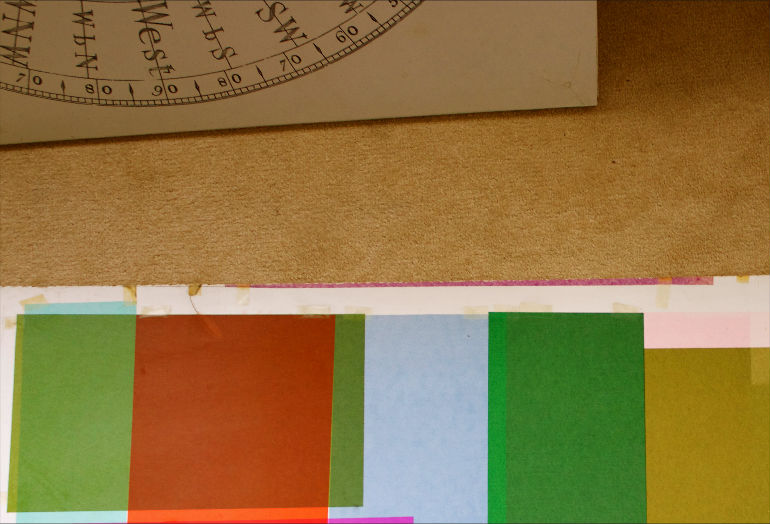
TOM ADAMS. PETER BLAKE. BERNARD COHEN.
ROBYN DENNY. BARRY DANIELS. EDWARD WRIGHT.

DANAD Design came together in 1958, the brainchild of a collective of artists who lived, hung out and worked in the dilapidated splendour of Marden Hill – a Georgian country house in Hertfordshire where made a communal home and creative hothouse.
Widely acknowledged as some of the originators of the Pop Art movement, these four painters and sculptors fused their talents with those of architects Peter Adams and Colin Huntley to encapsulate the essence of their art in their own hand-made, inspirational furniture.
No longer was fine art confined to the walls. The frame for the images was now three-dimensional; now it could be all around your room. You could sit on it, eat dinner off it, even stand on it…
So, literally, these everyday objects became a new platform from which to exhibit their art – and that’s now considered by many art historians to be a defining feature of Pop Art.
The furniture was hand-crafted – and never mass-produced. It was available only through Liberty, Heal's and Harrods and in DANAD Design’s mayfly lifetime of less than four fast-burning years, it helped to launch the careers of some of Britain’s most respected artists.
Marden Hill
In 1958 a group of young artists, poets, journalists and designers escaped the drunken mayhem of the Coloney Rooms to start an artist's community in a run down stately home in Hertfordshire called Marden Hill.
Marden Hill became a cultural oasis for a new generation of free spirits including Ted Hughes, Sylvia Plath, Bernard Cohen, Pam Gems, Michael White, Robyn Denny and Michael Andrews. Some put down roots, others drifted in and out.

The 1950s turned into the 1960s and a steady stream of musicians drifted in to join the party - including Donovan, Long John Baldry, Paul Kossoff and various members of Traffic. While Mick Jagger (still at London School of Economics
at the time) and Jimi Hendrix popped in, a young Rod Stewart spent a summer. It's said he wrote 'Maggie May' and first met best friend Ronnie Wood there. Clothes designer Ossie Clark dropped in when he was dropping out. Ken Russell wanted to use the house as the location for 'Women in Love' but they turned him down as they didn't want to draw attention to their bohemian bolthole.

The Artists
Bernard Cohen (British 1933)

Born in London in 1933, Bernard Cohen studied at the Slade School of Fine Art from 1951-1954, rose to prominence in the 1960s and returned to Slade in 1998 as the renowned school’s Professor and Director and hugely inspirational teacher.
Exhibited widely throughout his long career, he has ten paintings in the Tate Gallery’s permanent collection. His first solo exhibition Flowers, was in 1998, and in 2007, the Tate hosted ‘Bernard Cohen: Paintings from the Sixties'. This focussed on a key period in Cohen's artistic development and another celebration of his oeuvre, 'Work of Six Decades', followed in 2009 and celebrated his career. celebrated his career by bringing together a selection of key works accompanied by a comprehensive book.
Other important shows include ‘Artist in Focus’, six paintings from the Tate Gallery Collection, The Tate Gallery, London in 1996 and ‘Stroll on!’ Aspects of British Abstract Art in the Sixties’, Mamco, Geneva in 2006. He is currently showing as a part of Abstraction and the Human Figure in CAMs British Art Collection, Gulbenkian Foundation, Lisbon.
Robyn Denny (British 1930-2014)

After studying in London at the St Martin’s School of Art, 1951-54, and at the Royal College of Art, 1954-57, Robyn Denny took a teaching post at the Hammersmith College of Art between 1957-59, the Bath Academy of Art, 1959-65 and the Slade School of Arts in London. He exhibited at the Young Contemporaries in 1953 and in 1958 had his first solo show at the Gallery One, London.
Denny was among the prominent young British artists who took part in the Situation exhibition of 1960, which was intended to act as a showcase for new British abstract painting. He was the first artist in England to respond to American abstract expressionism and to establish a style free of natural associations. In order to emphasise the objectivity of his paintings, at one point he exhibited them resting on the floor, on the spectator’s own ground.
He represented Britain at the the Venice Biennale in 1966, and in 1973, a retrospective exhibition was held at the Tate Gallery, London.
Denny has contributed criticism for international art magazines such as Das Kunstwerk and Art International.
Peter Blake, RA (British 1932)

Since his emergence in the early 1960s as a key member of the burgeoning Pop Art movement, Peter Blake has been one of the best-known British artists of his generation. He remains one of the very few artists who have achieved both genuine popularity and critical appreciation. His 1961, ‘Self-portrait With Badges’ (Tate, London), where he stands in his denim jeans and jacket, wearing Converse trainers and holding an Elvis album, is one of the iconic images of the time, but Blake’s reputation from the outset, reflecting his broad art education, was based on working across media. He has produced collage, sculpture, engraving and printmaking, as well as commercial art in the form of graphics.
Blake graduated from the Royal College of Art in 1956, a few years before David Hockney and Allen Jones. The same year, he was awarded the Leverhulme Research Award and studied folk art in the Netherlands, Belgium, France, Italy and Spain. In 1958, he obtained the prestigious Guggenheim Painting Award.
During the last 1950s, Blake was quick to grasp the implications of the works of Jasper Johns and Robert Rauschenberg, and under their influence, took one stage further the object quality of his own works. The collage paintings and ready-made objects initiated by Blake in 1959, a full two or three years before the term Pop Art was in common usage, are among the most radically conceived of all of British Pop works. They are characterised by a daunting simplicity and directness in their appropriation of existing photographs, glued onto surfaces that mimic ordinary walls and doors, and painted in flat bright colours with household gloss paint. Their reliance on the ready-made and their elimination of the obvious signs of skilful handiwork is all the more surprising given Blake’s talent for meticulous drawing and painting. Each work is presented as a found object, although in fact it is essentially a brilliantly disguised illusion fabricated by the artist himself. The dramatic simplicity and geometric abstraction of these works contribute to their eye-catching impact.
Barry Daniels (British 1933 - 2010)

Barry Daniels was considered one of the Slade School of Fine Arts’ brightest pupils in the 1950s, taught along Phillip Sutton, Michael Andrews and Bernard Cohen, by the great William Coldstream. He won the Wilson Steer prize for landscape painting and the Abbey Minor Scholarship in 1953, the Boise Scholarship in 1954 and the French Government Scholarship in 1958.
He exhibited at the ICA’s ‘Six Young Painters’ and ‘London Group' shows in 1956, in the Rowland & Delbance Group Shows from 1956-58, and at Fulham Gallery in 1968.
In 1959, his work was part of a major abstract Impressionism exhibition along with De Stael, Sam Francis, Bernard Cohen Andre Masson and Helen Frankenthaler.
Toward the end of the 1960s he began designing for textiles and the Barry Daniels Studio was born. As well as selling his own designs he became an agent for many of the best young designers from the '70s, '80s and '90s, selling globally but with a New York focus.
Tom Adams (US born - 1926)
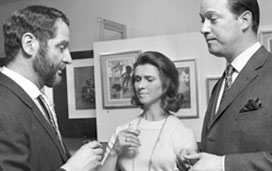
Born 1926, in Providence, Rhode Island, Tom Adams trained at Chelsea School of Art and Goldsmiths
College, London between 1946 and 1950, graduating in Fine Art. He started his career as an illustrator,
mainly on natural history features for the Eagle and Swift comics. He quickly established an international
reputation as a book cover artist for such classic authors as John Fowles, Patrick White and Peter
Straub. He is best known for his groundbreaking series of paperback cover illustrations for Agatha
Christie and Raymond Chandler.
In 1965, he founded Adams Design Associates, later to become DANAD Design, with Anna and Andy
Garnett and his architect brother, Peter. They produced large murals in the new medium of laminated
plastic and became involved in the huge output of pioneering laminated plastic art with his great friend
and colleague Barry Daniels. In 1968, Adams established the Fulham Gallery and was a pioneer of
poetry prints and posters. Poets he worked with included Edward Lucie-Smith, Christopher Logue,
George Macbeth, Adrian Henri and Brian Patten.
Since then his wide-ranging career has included films, working with Stanley Kubrick, Nic Roeg, Michael
Hodges and Tobe Hooper on concept paintings and special effects. He has also painted a number of
portraits, notably HRH Prince of Wales, Benjamin Britten and Richard Dimbleby. He is currently working
on various publishing projects with HarperCollins and exhibits regularly.
Edward Wright (British 1912 - 1988)

Edward Wright was an artist and designer. Born in Liverpool, where his father was Ecuadorian vice-consul (his mother was Chilean), he trained and worked briefly as an architect before concentrating on painting, drawing, print-making, and also ‘commercial art’ (as it was then still called). From 1942, through to his retirement, he lived in London. He worked in book publishing and advertising, taught graphic design at the Central School of Art and Design (his evening classes in typography, between 1952-56, became legendary) and at Chelsea School of Art.
Wright was among those who fostered the modern spirit in Britain, working alongside architects, and refusing any simple split between art and design. He was always concerned with text and language. Among his exceptional work is the lettering that he made for modern buildings, often managing both a specific design and an alphabet that could be applied more generally.
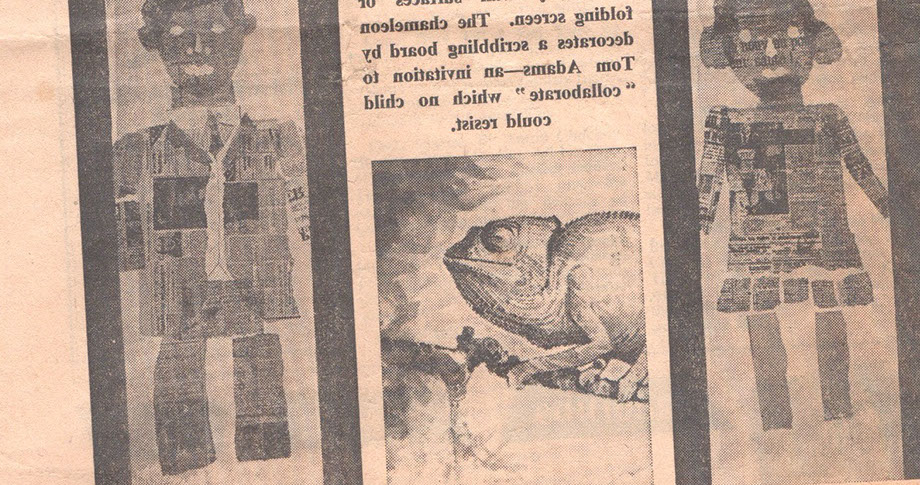




















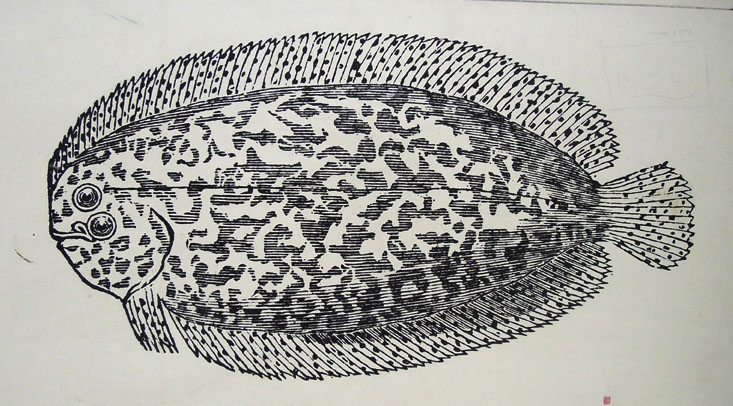
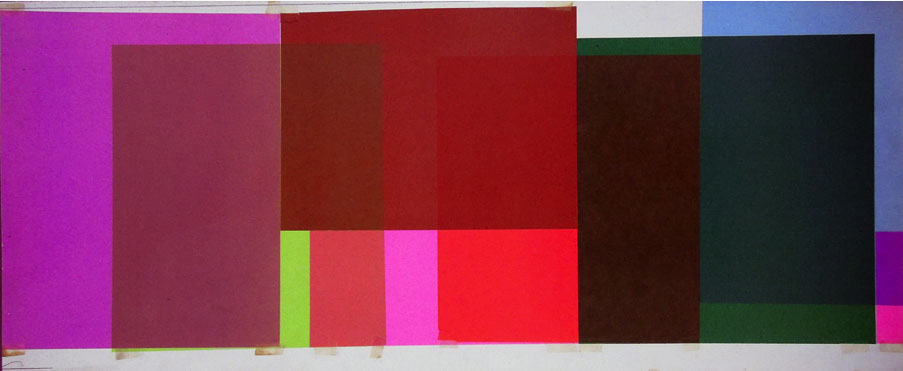



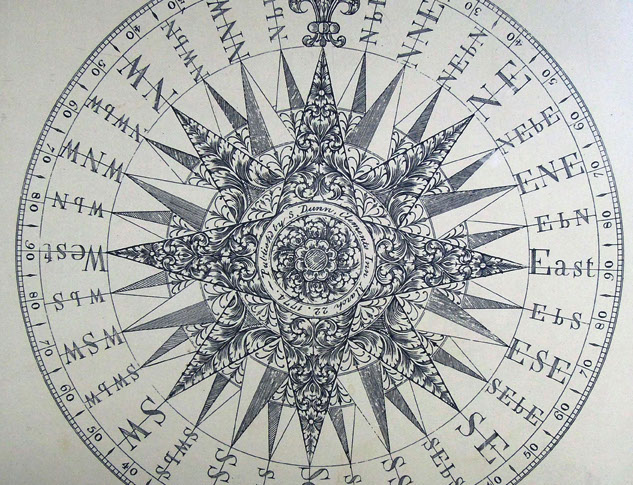


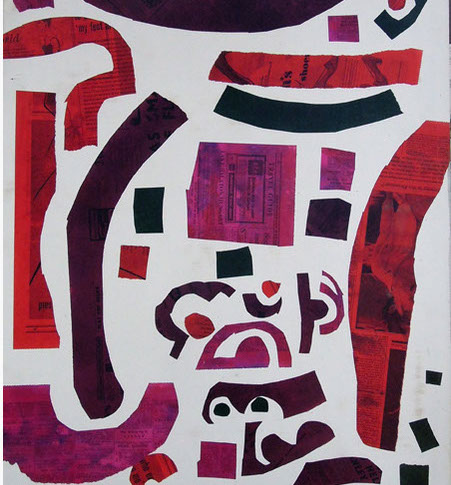


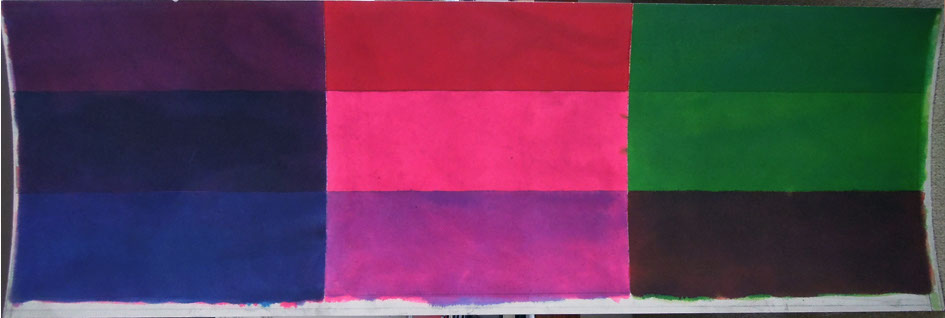

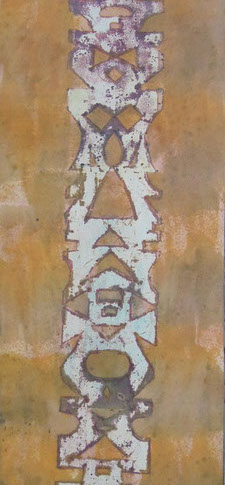






40 - 41
<
>
Press
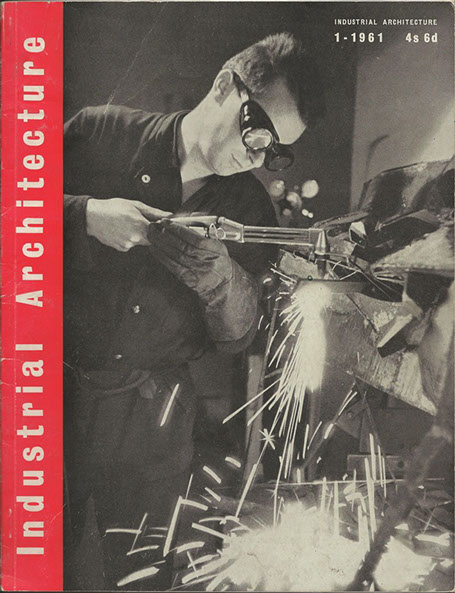

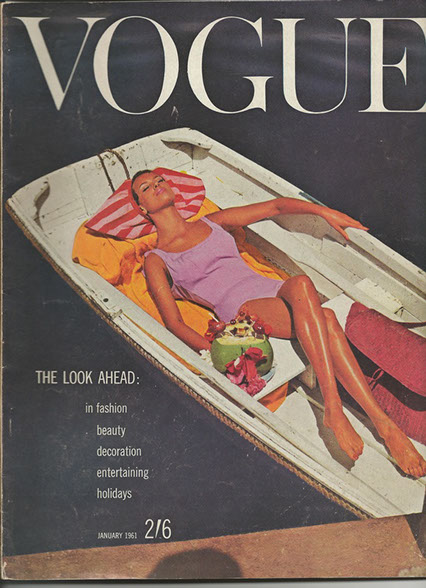




7 - 7
<
>

Get in touch
Email: mark@DANADdesign.com





